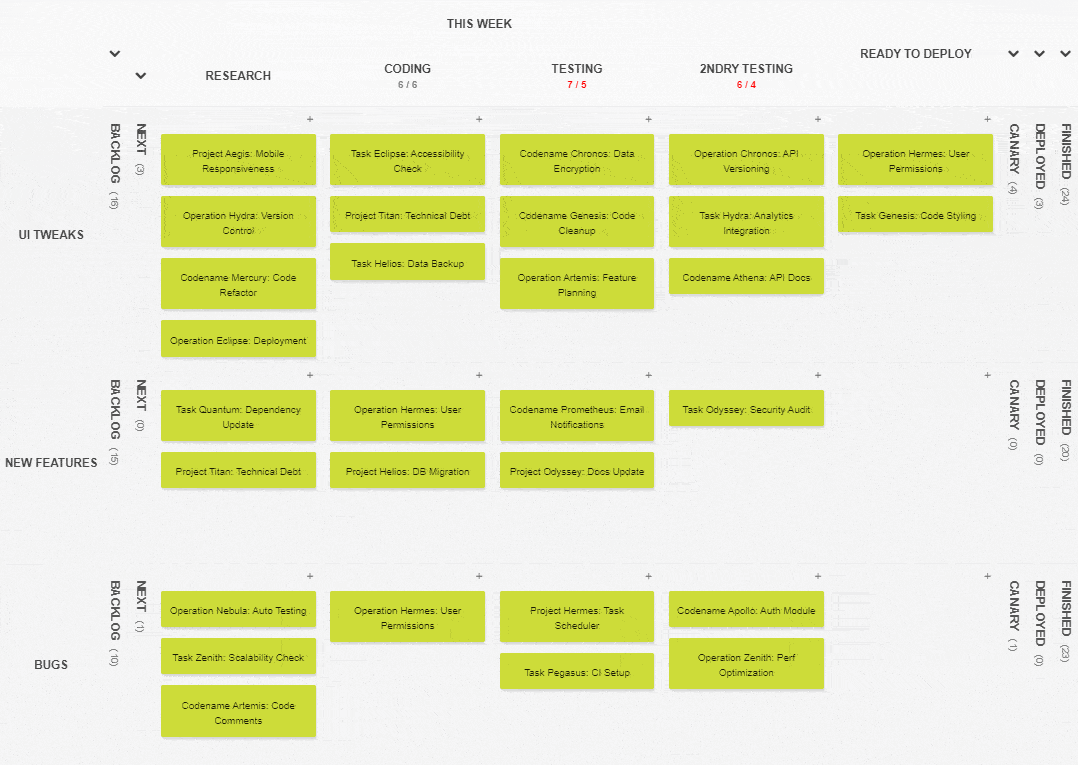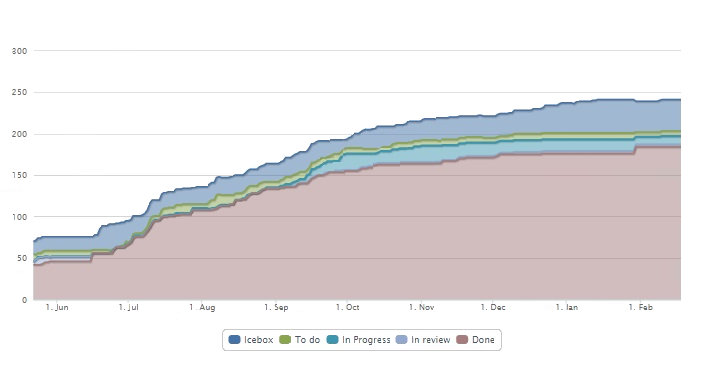Blog
Adapting Kanban to Hybrid Work Environments: A Modern Approach to Team Collaboration06 Aug 2024

Over the past few years of workplace evolution, the hybrid work model has become the norm rather than the exception. This shift presents both challenges and opportunities for maintaining productivity and collaboration across teams comprised of both on-site and remote members. Kanban, a visual workflow management method that has found widespread application beyond its manufacturing origins, stands out as one of the most effective tools in this context.
Nevertheless, deploying Kanban for a hybrid work scenario requires thoughtful adaptation to cater to the unique dynamics of distributed teams. In this article, we delve into how Kanban can be tailored to support hybrid teams, ensuring they can manage their work efficiently, communicate easily, and achieve their goals despite geographical divides.
The Essence of Kanban
The Kanban technique is built on a few core principles:
- visualizing tasks to make work transparent,
- setting constraints on ongoing tasks to ensure focus,
- and fostering a culture of continuous improvement.

Kanban’s benefits are clear in a traditional setting, but how do they translate to a hybrid environment?
Challenges of Hybrid Work for Kanban Implementation
Hybrid work environments introduce new complexities. Communication, for instance, can become fragmented when some team members are remote. They miss out on spontaneous office conversations or quick desk-side discussions, leading to potential misunderstandings, as well as feelings of isolation.
Moreover, access to work status and shared goals can be an issue. Physical Kanban boards, which work well in an office, are not accessible to remote workers. This lack of access can result in remote members feeling disconnected from the workflow or even misinformed as to the team's current aims. Additionally, different time zones and work schedules may complicate synchronous collaboration, making it harder to keep everyone aligned and informed about the latest changes.

Tailoring Kanban for Hybrid Teams
To make Kanban work in a hybrid setting, embracing digital tools is key. Platforms like Kanban Tool allow teams to create and manage project boards online, ensuring that on-site and remote members have real-time access to the same information. A Kanban Tool board not only replicates the functionality of a physical board but also offers added features like notifications, automation, and integrations that enhance workflow management.

However, technology alone may not be enough, and emphasizing effective communication must be a priority to ensure alignment. Daily standup meetings via video conferencing tools can become a vital touchpoint, bringing everyone together. Such meetings are crucial for surfacing blockers and ensuring all team members align on priorities and progress.
It will be equally important to outline clear policies guiding what the team's communication should look like, what each team's or team member's exact responsibilities are, and what defines their part of the work as completed. Setting such explicit rules will proactively help the team avoid miscommunication which can often hinder remote and on-premise collaboration. Process stage definitions are one of Kanban's core practices, proven by countless teams in the past.
For teams where different time zones or varying schedules are prevalent, asynchronous updates on the Kanban board will help keep everyone in the loop. It allows the team to create and update tasks, leave comments, and communicate status changes at times that suit them best, without demanding their colleagues' attention.

Fostering Transparency
In a hybrid work environment, process transparency isn’t a luxurious best practice, but a necessity. For your Kanban practice to work, you must ensure that all team members have equal access to information and feel included in the decision-making process.
This can be achieved through shared documentation and intuitively accessible communication channels. For example, maintaining a central repository of project-related information on dedicated Kanban boards ensures that everyone has access to the latest updates, guidelines, and resources. Similarly, it’s important to involve remote members in all key discussions and decisions, reassuring their sense of belonging and factual task ownership.
Process metrics are another powerful element of achieving transparency. By making analytics like lead & cycle time, cumulative flow, or working time report visible to the entire team, you open the door to everyone's engagement in data-driven discussions during retrospectives, truly enabling continuous improvement.

Adapting Workflow to Fit Flexibility
Flexibility is usually a hallmark of hybrid work, with team members working across different time zones and on flexible schedules. For those reasons, your Kanban workflow needs to be adaptable.
Specifically, work-in-progress (WIP) limits may need adjusting to reflect the varying capacities of team members. Flexible WIP limits help ensure no one is overwhelmed and work moves forward steadily. Additionally, when planning sprints or setting deadlines, it's vital to accommodate all employees' time zones and working hours to create realistic and achievable expectations.

Though not unique to hybrid work, prioritization also plays a critical role. By clearly marking high-priority tasks on the Kanban board, team members can independently choose work that fits their availability, working to ensure continuous progress on pivotal tasks even when schedules aren't perfectly aligned.
Cultivating Continuous Improvement
Finally, a hybrid team benefits immensely from a culture of continuous improvement. Kanban's inherent emphasis on regular feedback loops and incremental changes was designed to achieve this goal. Retrospectives, for instance, provide a structured opportunity for the team to reflect on what works and what needs adjusting.
To get the most out of the retrospectives, it’s essential to include both remote and on-site members, covering diverse perspectives. Additionally, creating channels for anonymous feedback can encourage more open and honest input, especially from those who might feel less comfortable speaking up in a mixed environment.

Encouraging initiative and experimentation is another way to drive continuous improvement. Teams should feel empowered to test new methods or approaches to their workflow, using Kanban metrics to assess the success of these experiments and conclude them with data-driven decisions.
In Summary
Adapting Kanban for hybrid work requires thoughtful integration of digital tools, communication strategies, and flexibility. By focusing on real-time access to information, transparent communication, and continuous improvement, hybrid teams can harness the full potential of Kanban. This approach not only bridges the gap between on-site and remote workers but also fosters a collaborative, inclusive, and efficient work culture.
As the future of work continues to evolve, so must our strategies for managing it. Kanban, with its adaptability and emphasis on continuous improvement, is ideally suited to help teams navigate the complexities of today's work environment. By refining these practices, organizations can ensure that all team members — regardless of location — are fully engaged, productive, happy, and contributing to the team's success.
Pilot Hybrid Work with Kanban Tool
Ready to adapt Kanban for your hybrid team? Consider getting started with a pilot project created with the help of a digital Kanban Tool board. Plan, schedule, and share your team's first few tasks and monitor progress together. Ensure the team is aware of the overarching goal: the pilot being their introduction to the new method, and stay open to their feedback and suggestions. Keep refining your approach as a team, and thrive in the work landscape!
Sign up for a 14-day free trial
to test all the features.
Sign up now and see how we can help
your organization deliver exceptional results.